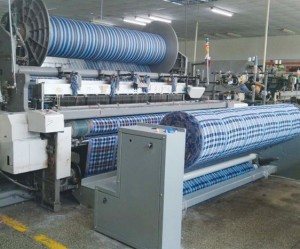The textile industry in China is a highly labor-intensive and foreign-dependent industry. China is the world’s largest producer and exporter of textiles and clothing. The sustained and stable growth of textiles and clothing exports is crucial to ensuring China’s foreign exchange reserves, balance of payments, stability of the RMB exchange rate, social employment and sustainable development of the textile industry.
The textile industry in our country is a highly labor-intensive and foreign-dependent industry. my country is the world’s largest producer and exporter of textiles and clothing. The sustained and stable growth of textiles and clothing exports is crucial to ensuring my country’s foreign exchange reserves, balance of payments, stability of the RMB exchange rate, social employment and sustainable development of the textile industry. The raw materials of textiles mainly include cotton, cashmere, wool, cocoon silk, chemical fiber, feather and down, etc. The downstream industries of the textile industry mainly include clothing, home textiles, and industrial textiles.
Loom/Outside Large Roll Cloth Rolling Machine
The textile industry is subdivided into cotton textile, chemical fiber, hemp textile, wool textile, silk, textile knitting industry, printing and dyeing industry, etc.
The textile industry is also a highly polluting industry. In May 2007, the State Council issued the “First National Pollution Source Survey Program”, and the textile industry was listed as a key polluting industry. According to the statistics of the State Environmental Protection Administration, the total sewage discharge of the printing and dyeing industry ranks fifth in the national manufacturing industry. 60% of industrial sewage discharge also comes from the printing and dyeing industry, and the pollution is heavy, the treatment is difficult, and the wastewater reuse rate is low. In the production process of the chemical fiber industry, some products use a large amount of acid and alkali, and eventually produce sulfur, sulfuric acid, sulfate and other harmful substances, causing serious pollution to the environment; some of them use solvents and media that seriously pollute the environment. Another manifestation of chemical fiber production polluting the environment is the non-degradability of chemical fiber products themselves, especially synthetic fibers, which have high waste recycling costs, pollute the air after burning, and are not easy to degrade after being discarded, resulting in deterioration of the soil environment. In addition, the pre-treatment process of the wool and linen industry is also the focus of sewage discharge in the industry. In terms of energy consumption, the power consumption of textile machinery and chemical fiber machinery is very prominent. The total energy consumption of the chemical fiber industry is about 10% to 30% higher than that of advanced foreign countries.
The textile and printing and dyeing technology in ancient China has a very long history. As early as in the primitive society, in order to adapt to climate change, the ancients knew how to use local materials, use natural resources as raw materials for textile and printing and dyeing, and make simple textile tools. Until today, our daily clothing, some daily necessities and artworks are all products of weaving and printing and dyeing technology.
Chinese machine tool textile originated from the spinning wheel and waist machine of the Neolithic Age 5,000 years ago. Simple mechanical reeling wheels, spinning wheels, and looms with traditional performance appeared one after another in the Western Zhou Dynasty. Jacquard looms and diagonal looms were widely used in the Han Dynasty. After the Tang Dynasty, China’s textile machinery became more and more perfect, which greatly promoted the development of the textile industry.
Diversification of textile raw materials
The development of ancient and modern textile processes and equipment is designed in response to textile raw materials. Therefore, raw materials play an important role in textile technology. The fibers used for textiles in ancient countries in the world are all natural fibers, generally wool, hemp, and cotton). For example, wool and flax were used for textiles in the Mediterranean region; cotton was used in the Indian Peninsula region. In addition to using these three kinds of fibers, ancient China also utilized a large number of long fibers-silk.
Silk is the best, longest and most slender textile fiber among all natural fibers, and can weave various complicated pattern jacquard fabrics. The wide use of silk fiber has greatly promoted the progress of ancient Chinese textile technology and textile machinery, so that silk weaving production technology has become the most characteristic and representative textile technology in ancient China.
Jiangsu Suzhou Rehow Machinery Co., Ltd. specializes in the production of textile machinery and equipment, which integrates research, design, production, marketing and service. It has a strong technical force, and constantly introduces domestic and foreign technologies, with reliable product quality and stable system. The company uses imported raw materials and component supporting products. The product range of REHOW textile machinery covers almost all types of fabrics, including but not limited to warp beam storage, hank machines, looms, loom machines, warping cars, cloth cutting machines, Electric warping car, warping warehouse, slitting and slitting machine, coiling machine, ultrasonic slitting machine, opening width machine, cloth inspection machine. REHOW Textile Machinery continues to lead the textile industry with its innovative approach and rich experience. We welcome offers and partnership opportunities with open arms!
In order to strengthen quality management, improve corporate image, and better meet customer needs, REHOW has intensified its management efforts, making our company have new breakthroughs in quality.
At present, with the service tenet of “do not try our best, but try our best”, we attach importance to product quality and service quality, and meet new challenges with a new attitude.
Post time: Jun-15-2023






